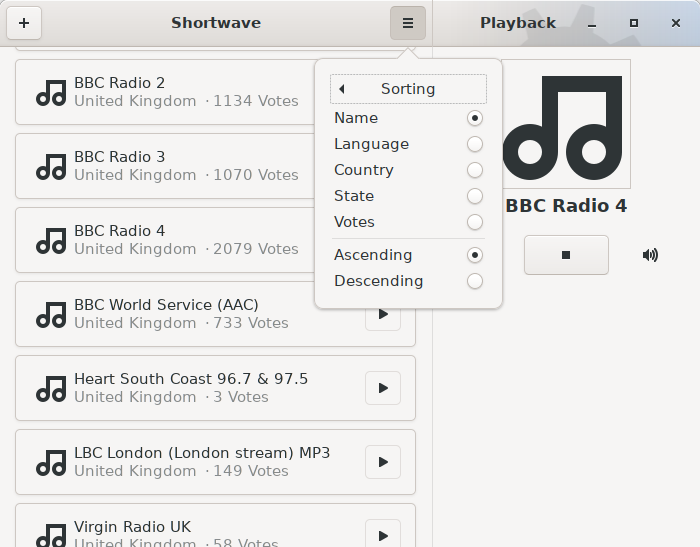Last Updated on September 3, 2020
Other Features
You can sort stations by name, language, country, state, and by votes, in both ascending and descending order.

There’s the option to export your library (in SQLite format 3). There’s also the option to import a library.
What else is there? Currently, not much to be honest. There’s a few keyboard shortcuts. They let you save your library, search for stations, and quit the application. You can also copy the stream URL to the clipboard.
Memory usage is very low, consuming a mere 80-120MB of RAM. Very frugal indeed, and a welcome break from the memory hogging web technologies based software I’ve been using recently.
Shortwave uses the libhandy library, which is crammed full of GTK+ widgets.
Pages in this article:
Page 1 – Introduction / Installation
Page 2 – In Operation
Page 3 – Other Features
Page 4 – Summary

Can you explain why Shortwave is an odd name?
Shortwave radio is radio transmission using shortwave radio frequencies. Shortwave radio can be used for very long distance communication, as short waves directed at an angle into the sky can be reflected back to Earth at great distances, beyond the horizon.
Calling the program Shortwave suggests it acts like a shortwave receiver. But it’s an internet radio streamer.
In a time before internet some people used to listen to a radio called a shortwave radio. It tuned to much higher frequencies (3 to 30 MHz) than the normal AM band which allowed the listener to hear shortwave radio broadcasts from all over the world. The signal would fade in and out with the atmospheric conditions but that was half the fun of listening to it. I used to listen to BBC and VOA from Africa all the time for news. Now those same stations are just a click away via an internet stream.
There’s still lots of us listening to shortwave radios, sending in reports and receiving QSLs.
How is this Streaming Software? It’s not, even close… No voice control, no encoders for broadcasting… I don’t get it?